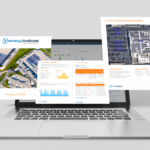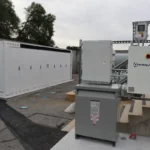Rate design has always been a key factor in determining the economic viability of a customer-side-of the-meter solar project. It’s been right up there in importance with the other commonly thought of factors, like Net Metering, the Federal Investment Tax Credit, installed/panel/soft costs, and the availability of financing. Looking out longer term, I believe rate design will be the most important factor in determining if the economics of a solar project make sense. I believe rate design will be king.
Certain rate tariffs (the formula utilities use to calculate a customer’s bill) are simply more solar-friendly than others. For example, residential rate schedules in California which have a steeply tiered structure are considered quite solar friendly. The reason solar interacts well (i.e. “is friendly”) on these tariffs is because solar production offsets the most expensive, high-tier usage first. Conversely certain commercial rate tariffs that feature high fixed charges and/or high demand charges can be rather solar-unfriendly. It would not be an attractive value proposition for a business owner if a solar system that offset 90% of their annual usage (measured in kilowatt hours), only eliminated 30% of their electric bill (measured in dollars), because the solar production could not reduce their fixed and demand charges.
Looking out longer term, I believe rate design will be the most important factor in determining if the economics of a solar project make sense. I believe rate design will be king.
Stating that rate design is important, and that some rate schedules are more conducive for solar than others – is not a novel thought. Pretty much all solar developers already know this. They likely have a good sense of which utility rates and which types of customers solar works best on in the markets that they operate, and focus their efforts accordingly.
As rebates and incentives continue to wind down, rate design and tariff structure will become even more important. If you believe that at some point rebates and incentives will likely phase out altogether, you realize all that will be left to make or break a project is the solar friendliness (or lack thereof) of the rate tariff. In California, the transition to a post-incentive world is well underway. The California Solar Initiative (CSI) rebate program has almost completely phased out. Last year Assembly Bill 327 was signed into law, which in addition to authorizing the California Public Utilities Commission (CPUC) to make changes to electric rates, also directs the CPUC to establish a new NEM framework. While we don’t know the rules for NEM v2.0 yet, it’s probably safe to assume it will not be as good a deal as NEM customers have today. What’s more, the move to NEM v2.0 will likely happen around the same time that the federal investment tax credit drops to 10% (from 30% today), if the solar industry can’t negotiate an extension.
Ultimately I believe that rate design will be king: it will be the most important factor in determining the economic viability of a solar project. This statement will be all encompassing. It will apply to all types of customer-side-of-the-meter projects, like advanced energy storage systems or demand response. This statement will also apply to all customer classes: residential and commercial alike. And this statement will apply regardless of if the system was cash purchased, leased, financed through a PPA or any other type of financing mechanism.



